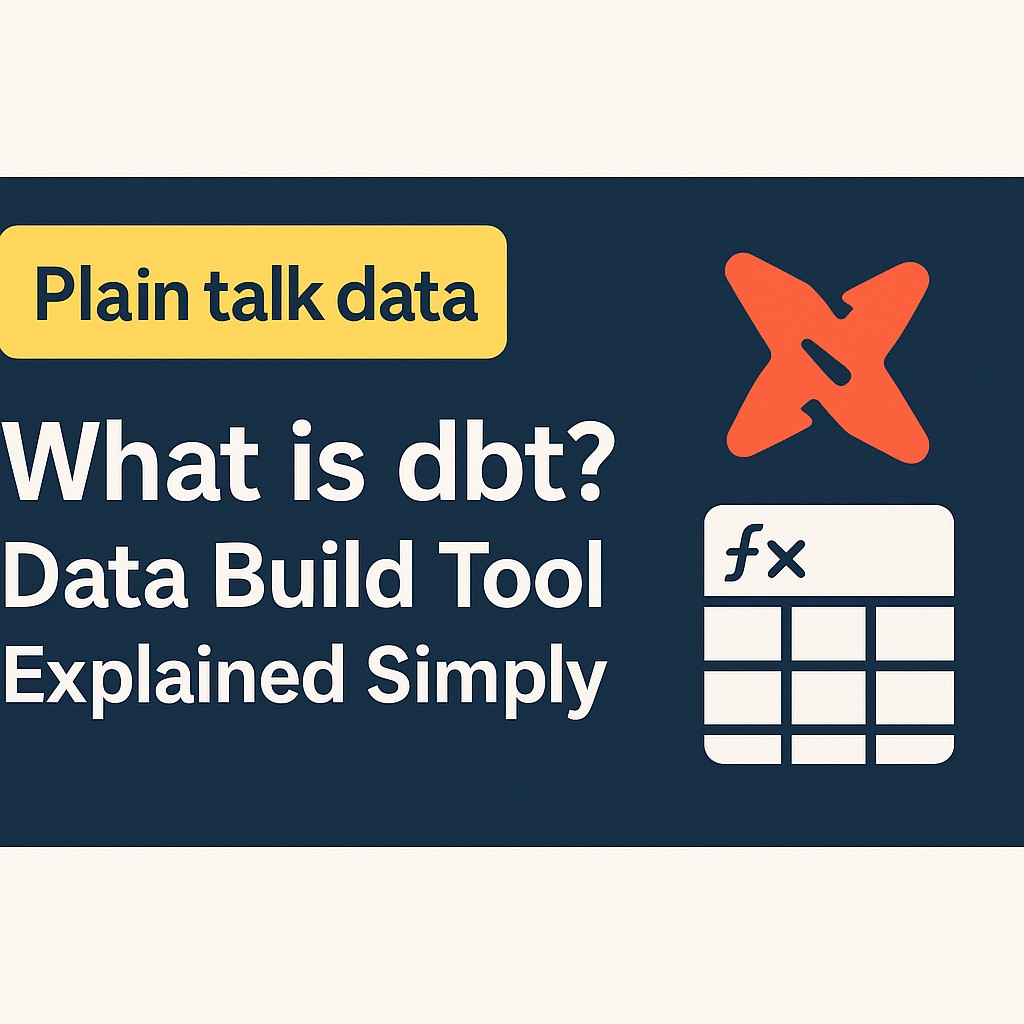Plain Talk Data: dbt (data build tool)
A plain-English explanation of dbt (data build tool) - Excel formulas for grown-up data. Learn how dbt transforms messy data into useful reports automatically.
Plain Talk Data: dbt (data build tool)
dbt = “Excel formulas, but for grown-up data”
You know how in Excel you can write a formula that takes numbers from one column, does some math, and spits out the answer in another column? Well, dbt does that same thing, except instead of working with a few hundred rows in a spreadsheet, it’s working with millions of rows in a company’s database.
Think of it like having a really smart kitchen assistant. You give it raw ingredients (messy data from different places), tell it your recipes (write some simple code), and it automatically cooks up clean, organized meals (useful reports and dashboards) that everyone in the company can eat.
Before dbt, data people had to hand-chop every vegetable and wash every dish manually. Now they just write down the recipe once, and dbt handles all the repetitive kitchen work automatically. Plus, if you mess up the recipe, you can easily fix it and re-cook everything without starting from scratch.
The “Wait, that’s all it means?” moment: It’s basically a really powerful calculator that works on your company’s data instead of just numbers you type in.
How to Actually Use dbt
Using dbt = “Like following a recipe, but the kitchen does the cooking”
Here’s how you actually use this thing:
Step 1: Set up your kitchen
Download dbt (it’s free) and connect it to where your company keeps its data - usually something like Snowflake, BigQuery, or Postgres. Think of this as plugging in your blender to the wall.
Step 2: Write your recipes (called “models”)
You write simple SQL queries in regular text files. Don’t panic - it’s like writing “take sales data, remove the weird entries, add up totals by month.” Save each recipe as a .sql file in a folder.
Step 3: Tell dbt to cook
Type dbt run in your command line. dbt reads all your recipes and cooks them in the right order. If Recipe B needs ingredients from Recipe A, dbt is smart enough to make A first.
Step 4: Check if dinner’s ready
Type dbt test to make sure nothing’s burnt. You can write simple checks like “sales should never be negative” or “every customer should have an email.”
Real-World Example
Instead of manually creating a “monthly sales report” every month, you write one recipe that says “grab all sales, group by month, calculate totals.” Then every month, you just run dbt run and boom - fresh report, automatically updated.
The beautiful part: Your recipes live in files you can save, share, and fix when something breaks. No more “Oh no, Sarah left and she was the only one who knew how to make the quarterly report.”
Why dbt Matters
- Automation: Write once, run forever
- Version Control: Track changes like code
- Testing: Built-in data quality checks
- Documentation: Self-documenting data transformations
- Collaboration: Share and reuse transformations across teams
